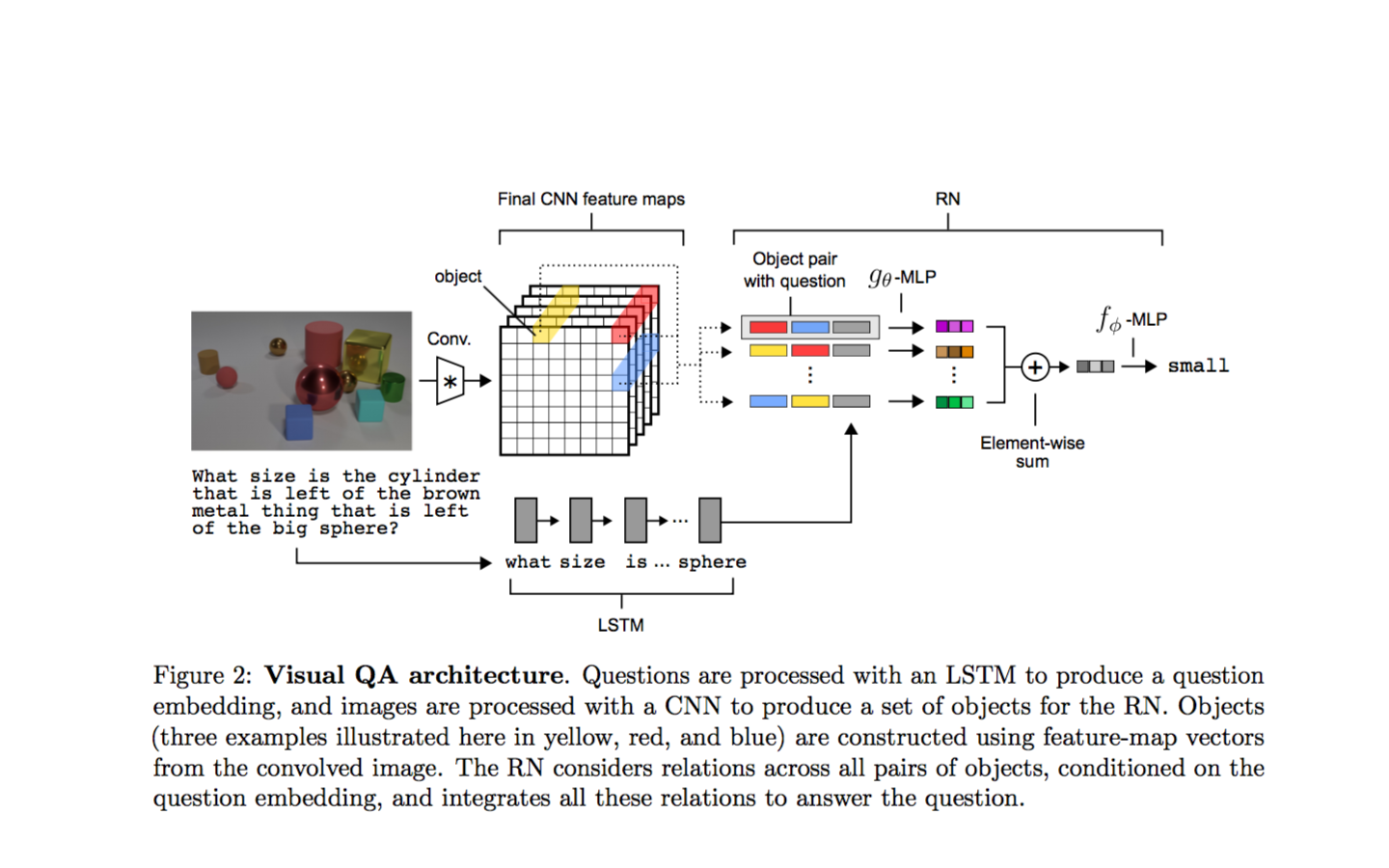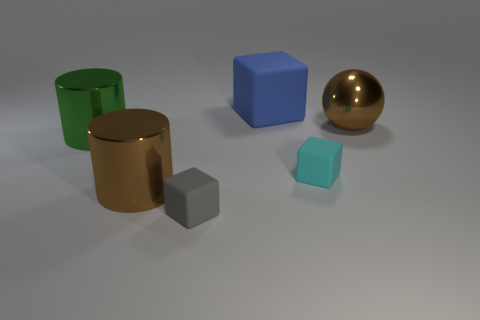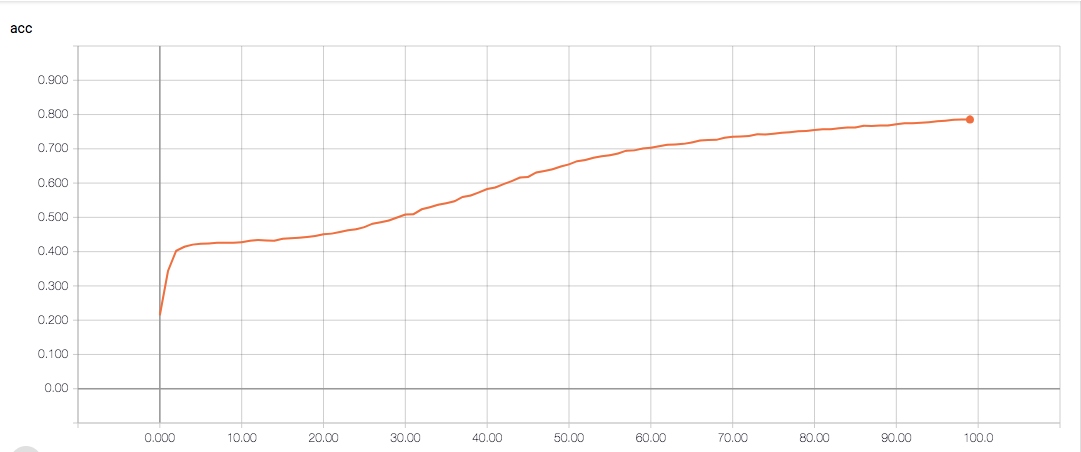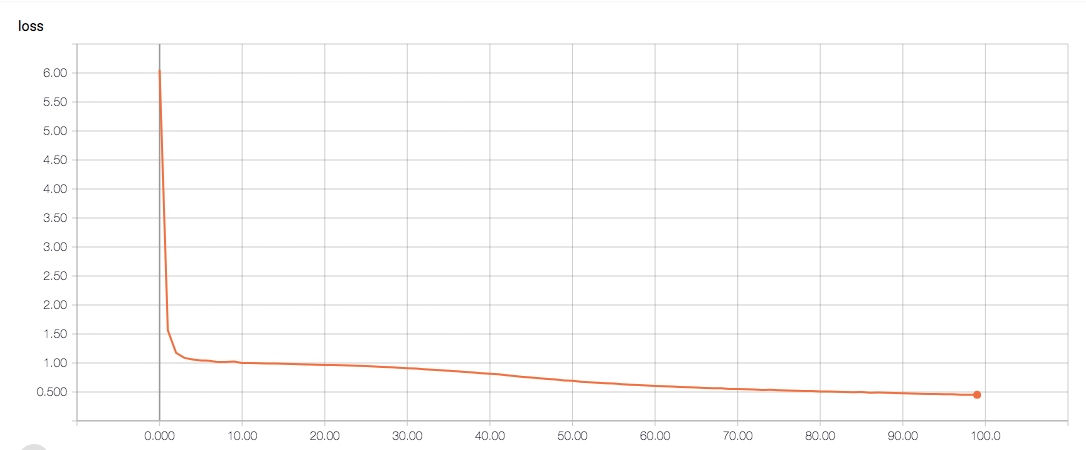"A simple neural network module for relational reasoning" Adam Santoro, David Raposo, David G.T. Barrett, Mateusz Malinowski, Razvan Pascanu, Peter Battaglia, Timothy Lillicrap https://arxiv.org/pdf/1706.01427.pdf
Relation Networks are a neural network module which are specialized to learn relations, just as convolutional kernels are specialized to process images. RNs are useful for Visual Question Answering, where they hold state-of-the-art results.
My Keras implementation uses the Functional API to define the network. One generalization to RNs is the use of a selection kernel which picks k distinct random objects from the processed image tensor instead of all n^2 objects. This allows for a much smaller number of relation vectors when k << n^2.
Visual Question Answering implemented on the CLEVR dataset (https://cs.stanford.edu/people/jcjohns/clevr/).
Above is an example image which could have the following question: "Q: Are there an equal number of large things and metal spheres?"
Images are processed using a CNN, while the questions are processed using an LSTM. These tensors are then decomposed into objects and fed as input into the RN module.

Training a RN using 10% of the train data results in ~80% accuracy after 100 epochs, which shows that using a random entity selection kernel still results in compelling results after a short training period.
Implementation of Relation Networks on MNIST demonstrating a simpler RN architecture.
First working prototype.


